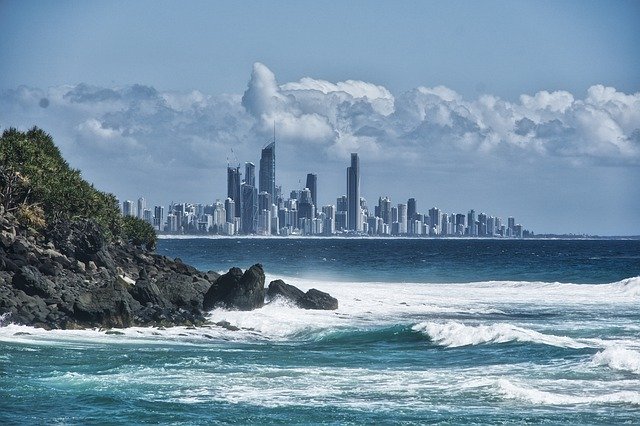Stock Material for Lessons
The term stock material refers to representations such as drawings, photographs, and video clips which are kept on hand for future use in larger works such as articles and documentary films. For example if we were writing a history lesson we might search for “stock” photographs of the persons involved in the events described. If we were writing about a concept such as “family” or “cooperation”, there might be a stock photograph or drawing to illustrate the idea.
Legal Considerations
There are three basic ways to obtain stock material: 1) is to save your own photographs and drawins which you think may be useful in the future, 2) to buy the material from a commercial service when you need it, and 3) to obtain it from online collections.
If you choose option two or three, you should pay careful attention to the legal terms, since they may limit how you can distribute the lessons which you produce. For example, a license which prohibits commercial work may prevent you from using the stock material in a textbook which is sold. Or the license may require that you include a notice crediting the creatore of the stock material. This will require extra work on your part.
Material which is in the public domain can be used freely with no restrictions on modification and no requirement to name the source. Most material that is in the public domain entered it because the copyright term expired. Nowadays some material enters the public domain because the copyright holder has waived all rights. This is frequently done using the CC0 Public Domain Dedication.
From the standpoint of one who wants to use stock material, the next best thing to the public domain is a Creative Commons license. That is because these licenses clearly spell out how you may use a work, including whether you may modify it or incorporate it into your work, and any notices which you must provide.
Beware of sites with licenses written by amateurs. These are often vague, confusing, contradicatory, and fail to cover common situations.
You should keep notes on where you obtained your stock material, particularly if you will be putting it on line. That way you can show you obtained it legitimately if anyone every questions this. A lawyer, Faye Gelb provides advice on how to do this. You should be able to save this information in or alongside your project files.
Vector Drawings
- Openclipart – Tens of thousands of vector drawings in SVG format. Quality varies from excellent to awful. All are in the public domain. Site was down for much of 2019, but as of January 2020 its is back up, though seemingly without a search function.
- Public Domain Vectors 60,000 public domain vector images. Includes some of the better material from Openclipart. Search results from Shutterstock (a comercial supplier of stock art) are displayed alongside the search results and this can be confusing at times.
- Pixabay Vectors Pixabay is best known for high-resolution stock photographs, but they also have tens of thousands of vector drawings.
Pictures Intended for School Projects

- Pics4Learning – Good-quality photographs in moderately high resolution sorted into categories such as “National Parks”, “Dinosaurs”, and “Parts of Your Body”. Not in the public domain. The image use policy grants permission only “for use by students and teachers in an educational setting”.
- Wpclipart – Tens of thousands of drawings of acceptable to good quality. Most are in raster format though a few are in SVG. Includes simple drawings done on computers, photographs, and scans of old book illustrations. Sorted into categories such as “energy”, “cartoon”, and “science”. The terms of use indicate that the pictures are in the public domain. Project of a single person who vets the images to make sure they are really in the public domain and suitable for children.
- Public Domain Clipart – 25 thousand drawings in low to medium resolution raster format. A mix of colored line drawings, what look like old book illustrations, and photographs. Many are from US Government sources. The quality is generally good.
High-Resolution Stock Photographs

There are quite a number of sites which offer high-resolution photographs of landscapes, objects, and people. Often these photographs are contributed by photographers who want to share their work.
Originally, these sites used the Creative Commons Public Domain Dedication (CC0) to release these photographs to the public domain, or if the law did not allow that, to offer a very broad fallback license. This was very convenient for users who did not need to study license terms or worry about whether they had included all the required legal notices. But it eventually created a problem for the sites. This was that upstart sites could simply copy all of their best photographs. This was perfectly legal. Eventually the two biggest sites (Pixabay and Unsplash) stopped releasing the photographs to the public domain and instead licensed them under terms which they consider very permissive but which prohibit other sites from taking the pictures. Sadly, these licenses, while good as readable statements of what they intend to accomplish, are not backed up by a comprehensive precisely worded license document written by lawyers. This leaves a lot of grey areas, particularly for those who wish to incorporate these photographs into larger works which they intend to release under a free-culture license such as Creative Commons.
Confusion continues. In May of 2019 a company called Canva announced that it had bought Pixabay and Pexels. The announcement says that the photos will be “completely free under a Creative Commons CC0 licence”. However, as of January 2020 the licenses on these sites are unchanged.
- Pixabay – Large collection photographs and a smaller number drawings and video clips. Tends toward the artistic and the illustration of themes. Some are artistic montages with heavy atmospheric filtering. Has some nudes. (There is a filter for excluding them.) Used CC0 until January 9, 2019, after which they use the Pixabay License.
- Unsplash – Used CC0 until sometime between May 30 and June 8, 2017 when they switched to the Unsplash Licensing. Unsplash has acknowledged that CC0 still applies to photos uploaded before the license change, but decline to identify the CC0 photographs on their site.
- Pexels – As site similiar to those of Pixabay and Unsplash. Uses a similiar informally-worded license.
- Stocksnap – Images of nature, landscapes, people, illustration of themes. Uses the CC0 public domain dedication. Watch out though, when you search they display results from Shutterstock before their own results which is very confusing. That a photograph is from Shutterstock is indicated only be a small blue star in a yellow tab in the top-left corner.
- StockVault – Uploaders choose a license or CC0 public domain dedication.
- Kaboompics – A photographer named Karolina Grabowska has posted about 15,000 of her own pictures. The license is similar to those used by Pixabay and Unsplash.
Other Image Collections

- Wikimedia Commons – Collection of images, sounds, and video collected for use in Wikipedia and other projects. Check the information page for each image to see why it is considered suitable for use in Wikipedia. Grounds are that it is in the public domain, that it has been released under a suitable license, or that its use in the online encyclopidia is fair use.
- Flickr: The Commons – Collection of public domain images posted by over 100 public institutions. Includes the Internet Archive Book Images described in this announcement. Be sure to always start your search from search box in the middle of the Commons home page. If you accidently use the search box at the top of that or any other page, you will be searching all of Flickr instead.
- Public Domain Q Public domain photos, illustrations, and photographs of paintings. Site is in Japanese, but can be navigated without too much trouble using a web browser (such as Google Chrome) which does automatical translation.
- NCI Visuals Online – Photographs and drawings provided by the National Cancer Institute. Copyright status indicated for each. They ask to be credited as the source even for the public domain images.
- Rawpixel’s Public Domain Images Fantastic collection of images taken from out-of-copyright books, chromolithographic plates, and US government sources. Includes fine art paintings, high quality illustrations of persons, places, floura and fauna, illustations and photographs from NASA.
Image Search Engines
- Librestock – Search dozens of free stock photo sites at once
- Creative Commons Image Search – Search the internet for images with a Creative Commons license. If you wish, you can limit your search to the more permissive licenses.
Video
- Librestock – Search for CC0-licensed videos from stock footage sites
- Vimeo – Videos on Vimeo which are tagged as being in the public domain or under a Creative Commons license.
- Videvo – Video clips, including effects shots such as snoke and fireworks, many under a Creative Commons license.
- Videzy – More video clips. License terms indicated for each video.
- Pond5 – High-quality new stuff costs money, but they offer some old public domain stuff for free.
3D Models and Textures
- Blend Swap – Artists share models created with Blender. Many have been dedicated to the public domain or shared under a Creative Commons license.
- Blogscopia – Over 100 3D models in multiple formats including Blender and Sweethome3d.
- Open Game Art – Large searchable archive of 3D models, textures, and other video game assets released to the public domain or under a permissive license such as the GNU or Creative Commons licenses.
- Free 3D Models on Sketchfab – These models are either in the public domain or under a Creative Commons license. Models can be downloaded in the format in which they were uploaded or converted to glTF or USDZ format. Noteworthy is the Public Domain Cultural Heritage Collection which contains 3D scans of objects in the collections of various cultural institutions. As of January 2022 there are about 3000 such models. See announcement.
- 3D Warehouse – Thousands of models uploaded by users. Free to use with certain restrictions outlined in the license. Models can be downloaded in Sketchup or Collada format.
- Quaternius – Artist creates model sets, CC0 licenses them. Work supported through Patreon.
Sound Effects
- Freesound.org – Over 400,000 sound effects released under Creative Commons licenses.
- Gamesounds.xyz –
Someone’s collection of sound libraries which he believes are free to use.
It appears that each top-level folder is a separate collection with its
own terms. In most cases these are in a file called “LICENSE”. We have traced
some of these collections to their original sources:
- 99Sounds
- BBC Sound Effects Library (16,000 BBC sound effects licensed for “personal, educational or research purposes”)
- Kennedy’s Sound Pack
- Octave-UISounds
- Soundbible.com – Hundreds of sound effects which are either in the public domain or released under the Creative Commons Attribution 3.0 license
- FXhome – A few hundred sound effects downloadable as sets in ZIP files. All under the Creative Commons Attribution 3.0 license
- Open Game Art – Large searchable archive of sound effects and other video game assets released to the public domain or under a permissive license such as the GNU or Creative Commons licenses.
Royalty Free Music
- MusOpen – Classical music recordings in the public domain or under a Creative Commons license. In addition to recordings, this site offers sheet music and textbooks. It is not clear what is the source of these music recordings and who performs in them.
- IncompeTech – Original and classical music performed by Kevin MacLeod. Released under the Creative Commons Attribution 4.0 License. Some of this music is also available on his old site.
- Youtube Music Library – Searchable collection of hundreds of music tracks which Google has approved for use in Youtube videos. Includes tracks from Kevin MacLeod, Chris Zabriskie, Kevin Shaw, and Twin Musicom under a Creative Commons Attribution license. For tracks which do not require attribution, the performer’s name is sometimes linked to his Youtube channel.
- Open Game Art – Large searchable archive of music and other video game assets released to the public domain or under a permissive license such as the GNU or Creative Commons licenses.
Icon Sets
- Nuvola SVG Icons – Icon set created for the GNOME desktop
- Crystal Clear Icons – Icon set created for the KDE desktop, in PNG format
- The Noun Project Goal of project is described as “building a global visual language that unites us. Provides color photographs and black-and-white icons to represent things and concepts. Icons are either in the public domain or under a Creative Commons license requiring attribution. Other terms are available for a fee.
Other Stock Materials
- Global Digital Library – Open license children’s books ready for translation
Other Lists
- List of sites at Wikipedia
- List of sites at Wordpress.org
- Where can I find images that are free to use?
- Best Stock Footage Sites You Wished You Already Knew!
- Wikipedia:Free sound resources
- Where can I find free sound effects?
- 13 Sources For Free Public Domain and CC0-Licensed Images
- Pro Theme Design: Free Stock Photos

